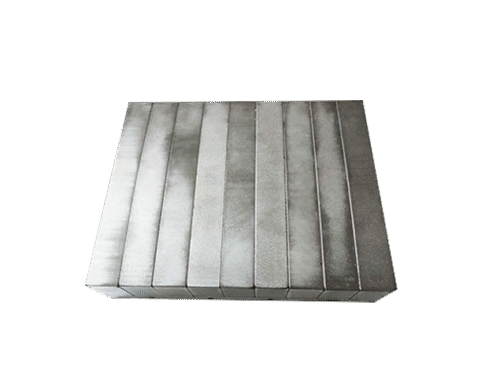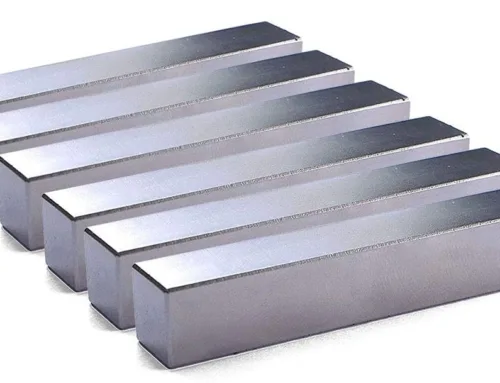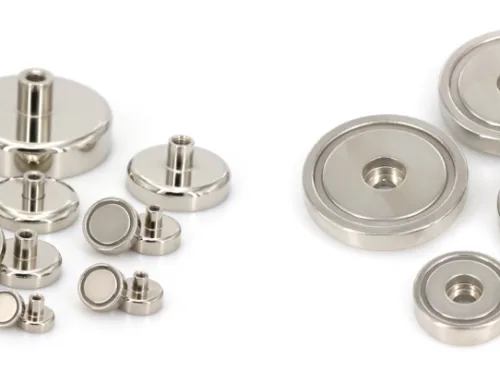Are you curious about how NdFeB magnets—those tiny yet incredibly powerful neodymium-iron-boron magnets—are shaping the future of mobile phones? If you’ve ever wondered what makes your phone’s speakers crisp, its vibration feel just right, or how wireless charging aligns so perfectly, then you’re in the right place.
In today’s mobile tech, using NdFeB magnets isn’t just a trend—it’s a game changer. From improving performance to enabling sleek designs, these magnets play a critical role behind the scenes. Whether you’re an engineer, buyer, or enthusiast, understanding the use of NdFeB magnets in mobile phones is essential to appreciating modern smartphone innovation.

magnets and cell phones
Let’s explore why these magnets have become indispensable and how trusted suppliers like NBAEM are fueling this magnetic revolution.
What are NdFeB Magnets
NdFeB magnets, short for Neodymium-Iron-Boron magnets, are a type of rare earth magnet known for their exceptional strength and efficiency. They are widely used in modern electronics, especially in mobile phones, because they deliver high magnetic performance in a very small size.
Composition and Properties
- Main elements: Neodymium (Nd), Iron (Fe), and Boron (B)
- Magnetic strength: Among the highest of all commercially available magnets
- Density: Relatively low, which helps keep devices lightweight
- Production: Usually made through sintering or bonding processes
- Coating: Often plated with nickel, zinc, or epoxy to prevent corrosion
Basic Property Table
| Property | NdFeB Magnets | Notes |
|---|---|---|
| Magnetic strength (BHmax) | 30–52 MGOe | Extremely high |
| Density | ~7.4 g/cm³ | Keeps them compact |
| Curie temperature | 310–380°C | Higher grades resist heat better |
| Corrosion resistance | Low without coating | Coating is essential |
Key Features
- High magnetic strength for maximum performance in compact designs
- Lightweight to avoid adding bulk to mobile electronics
- Small form factor allows integration into tiny components without sacrificing power
Comparison With Other Magnet Types in Electronics
| Magnet Type | Magnetic Strength | Size Efficiency | Cost | Common Uses |
|---|---|---|---|---|
| NdFeB (Neodymium) | Very high | Excellent | Medium | Smartphones, small motors |
| Samarium Cobalt | High | Good | High | High-temp electronics (More here) |
| Ferrite (Ceramic) | Low to medium | Fair | Low | Speakers, low-cost devices |
| Alnico | Medium | Fair | Medium | Sensors, guitar pickups |
Compared to ferrite or Alnico magnets, NdFeB magnets deliver much greater magnetic energy in a smaller, lighter package. This makes them a top choice when engineers need powerful yet compact magnetic components in mobile phones.
For a detailed breakdown of rare earth magnets, see our guide to neodymium magnets.
Core Uses of NdFeB Magnets in Mobile Phones
NdFeB magnets play a role in almost every feature we use on a smartphone. Their high magnetic strength and small size make them a go-to choice for many internal components. Here’s where they’re most common:
Speaker and microphone components
In both speakers and microphones, NdFeB magnets help produce clear and powerful sound without taking up extra space. They deliver strong magnetic fields, which improves audio quality in calls, music, and videos.
Vibration motors for haptic feedback
The tiny vibrations you feel when typing or getting a notification come from haptic motors powered by these magnets. NdFeB magnets create more precise and responsive feedback, making touch interactions feel more natural.
Magnetic sensors and compass applications
Built-in smartphone compasses rely on magnetic sensors that often use NdFeB magnets. This helps with location tracking, navigation apps, and augmented reality features by providing accurate directional data.
Wireless charging alignment and security
For wireless charging, small NdFeB magnets help align the phone perfectly on the charging pad, increasing efficiency and keeping the device steady during charging. They also add magnetic security for accessories like magnetic mounts or cases.
Camera module stabilization and autofocus
In phone cameras, these magnets are used in optical image stabilization (OIS) and autofocus systems. This keeps shots steady and focused, even if your hand moves slightly, resulting in sharper pictures and smoother videos.
Advantages of Using NdFeB Magnets in Mobile Phones
NdFeB magnets bring several clear advantages to smartphones that directly impact performance, design, and user experience.
1. Stronger Magnetic Fields for Better Performance
Neodymium magnets deliver a higher magnetic strength compared to other magnet types used in electronics. This means clearer sound in speakers, more accurate magnetic sensors, and smoother camera stabilization.
2. Miniaturization and Space Efficiency
Because these magnets are so powerful for their size, phone makers can design thinner and lighter devices without losing functionality. This is a big win for compact mobile devices where every millimeter matters.
3. Durability and Temperature Resistance
High-grade NdFeB magnets used in phones are built to handle everyday use. They maintain magnetic performance even with temperature changes from regular charging, outdoor use, or wireless charging coils.
4. More Precise Feedback Mechanisms
In haptic feedback motors, stronger magnets create sharper, more accurate vibrations. This makes touch responses more realistic, whether you’re typing, gaming, or using navigation gestures.
By combining high magnetic power with a small footprint, NdFeB magnets help smartphones deliver faster, clearer, and more immersive user experiences without adding bulk.
Market Trends and Innovations in NdFeB Magnets for Mobile Phones
The smartphone market in the U.S. is pushing for devices that are slimmer, lighter, and more powerful. This is driving a growing demand for compact and powerful NdFeB magnets that fit into tight spaces without sacrificing performance.
Growing demand in smartphones
- Users expect richer sound, stronger haptic feedback, and smooth camera functions, all in smaller phones.
- NdFeB magnets meet this need with high magnetic strength in a small size, making them essential for modern mobile devices.
Advances in NdFeB material grades
- New material grades are being developed specifically for electronics, improving temperature stability and resistance to demagnetization.
- These upgrades help keep performance consistent, even with the heat generated inside today’s power-hungry smartphones.
Role in foldable and flexible phone designs
- Foldable devices require slimmer magnetic components that still offer reliable force.
- NdFeB magnets are now being designed to integrate seamlessly into flexible hinges, magnetic clasps, and alignment systems for these devices.





Leave A Comment